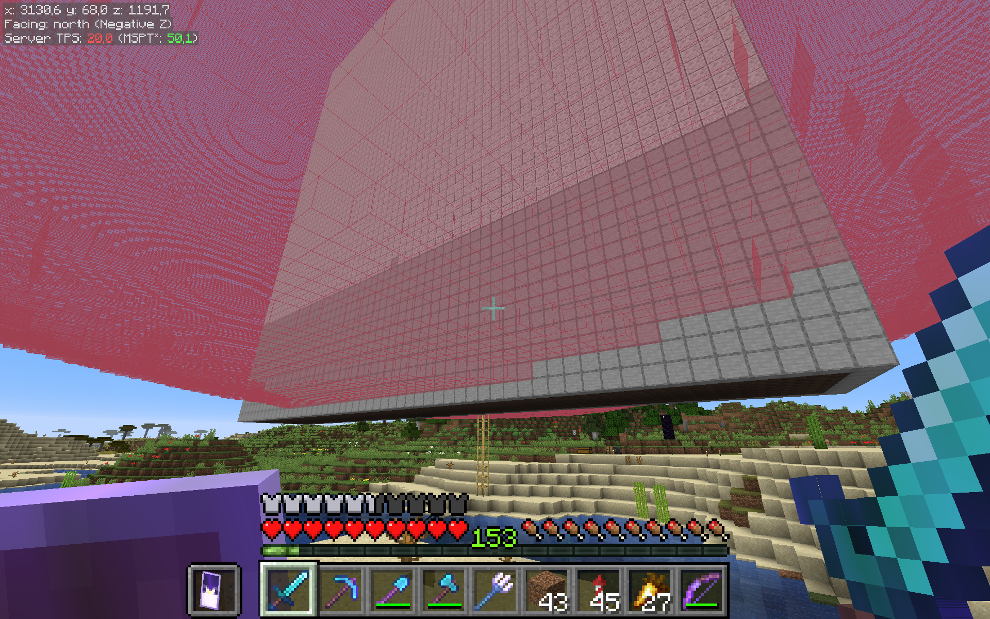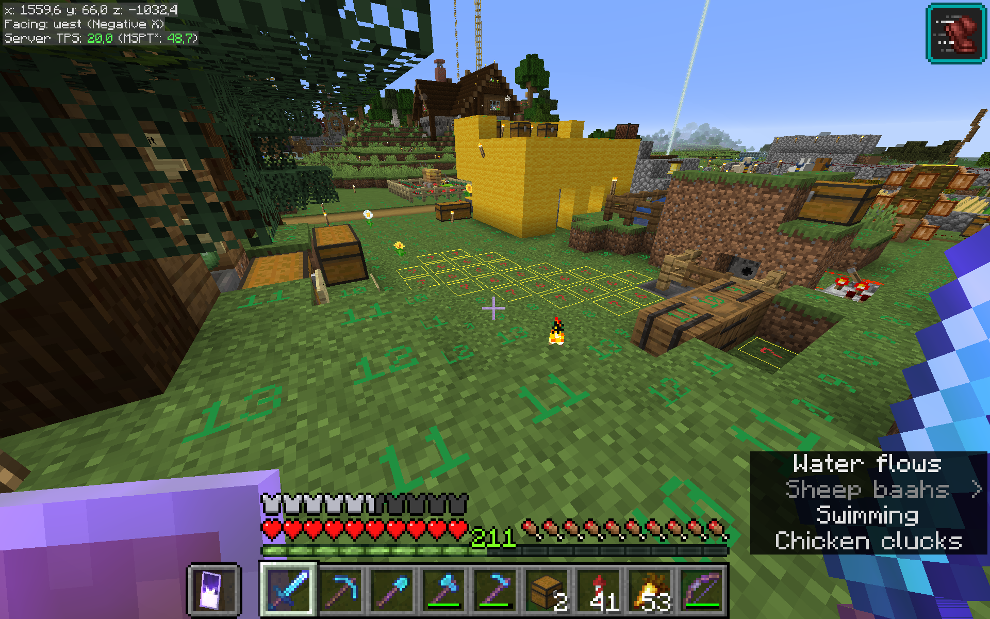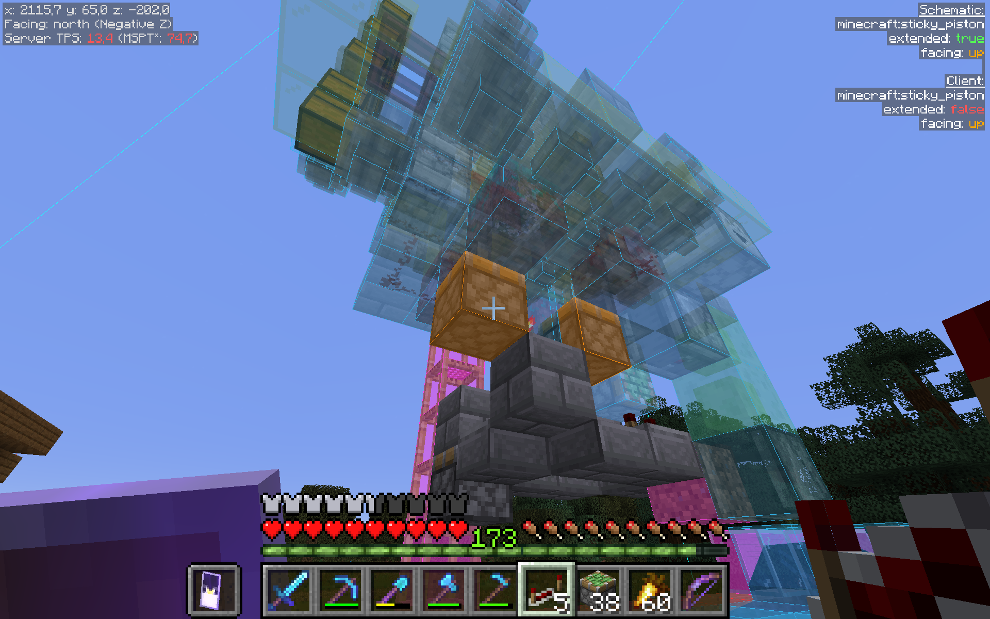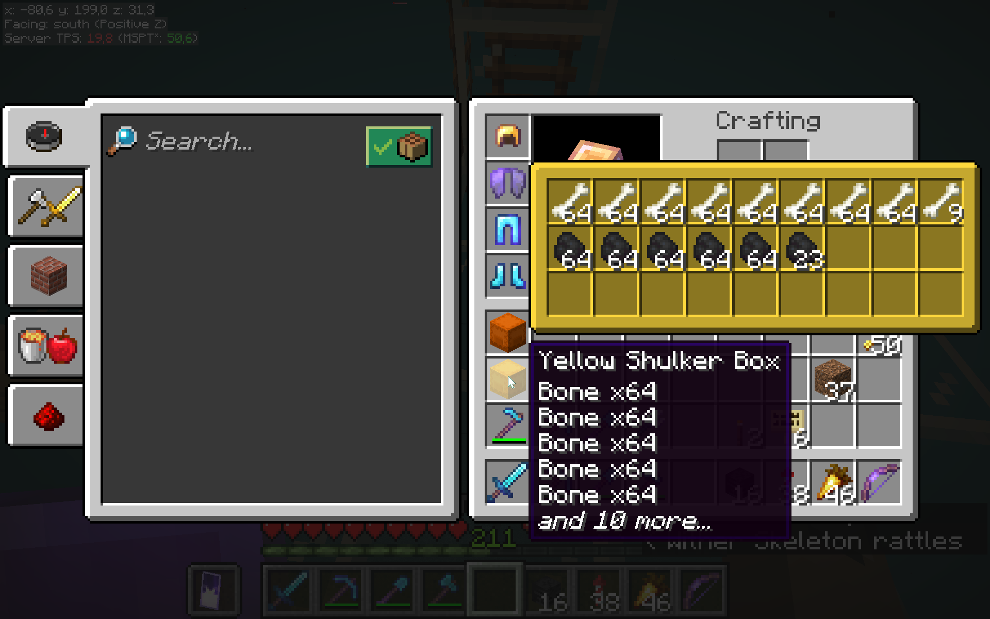| Minecraft link collection | Created: 05.08.2021 19:40 Last modified: 17.09.2021 20:40 |
||||
|
One of the things I did to pass time since Corona started was that I started
to play Minecraft (Java Edition). This post is essentially a link collection,
with a few small rants in between. One big problem when searching for information about anything Minecraft is the huge number of results - but they are pretty much all sh*t. So the goal of this post is mainly to keep track of the very few good things I found - mostly for my personal use, but hey, maybe others share my definition of what is good and then it might be useful for them too. YoutubersFor every Minecraft-topic there are a gazillion videos on Youtube. But almost all of them suck, not only because of the usual Youtube annoyances. It seems to be a golden rule for videos on Youtube that they need to consist of:
Besides those annoyances of the Youtube ecosystem itself, for Minecraft-videos there are a few more:
So, the following is a list of Youtubers that at least do not make ALL of the above annoyances together in all of their videos:
Misc
ModsAs Minecraft is not really designed to be modded (other than by graphic resource packs), these are always highly version specific. The following therefore probably will not work on anything than version 1.16.5 I used at the time of writing this. Mods that are not under constant, and very work intensive development will cease to work abruptly with a seemingly minor update, because some internals changed and the mod probably has to be rewritten from scratch. In general, it's an absolute mess.There are a few mods that I would like to recommend. I will describe the first two in a bit more detail: MiniHUD and Litematica. Coincidently, they are by the same author. They both provide mayor quality-of-life improvements. They are client-side and do not need a server-side mod; however, as they might be considered a bit cheaty by some, you probably shouldn't use them on multiplayer-servers you don't control. MiniHUDMiniHUD is a generally useful tool. Its main function is to show selected parts of the data that you could see on the F3 debug screen in the top left corner. This allows you to e.g. display your coordinates in just one line in the top left corner, you don't need to have the F3 debug screen open that would normally block your whole view.It also has a few other handy features. For example, it can show you the contents of shulker boxes in a proper graphical fashion when you mouse-over, instead of the textual description you get with vanilla. This is a big quality-of-life improvement, and it is completely beyond me why this isn't a feature in vanilla - as the textual description thing feels totally out of place and inconsistent. It can also overlay graphical markers over the world. This can be explained with an example: Say you want to build some AFK-mob-farm. As mobs can only exist in an area of 128 blocks around you (as soon as they leave that area they instantly despawn), your AFK-position needs to be chosen in a way that the whole spawn platform is within that range, but ideally not much else is. For that MiniHUD can highlight a 128 block wide sphere around a certain position. There is a screenshot of that below. When spawn-proofing an area in the overworld, you usually want to know when there is enough light so that no monsters can spawn. MiniHUD also has your back on that: It can display the light level on blocks as an overlay, i.e. every block in your world around you has the light level written on it (as a number), and that number turns green from light level 8 (which is the limit for hostile mobs to be able to spawn). Again, of course you can get that same info from the F3 debug screen, but it's an absolute PITA to use. The github-page for this project is https://github.com/maruohon/minihud, but there are no binary downloads there - your best bet for that is probably curseforge: https://www.curseforge.com/minecraft/mc-mods/minihud LitematicaLitematica adds schematic support to Minecraft. For those that know Factorio, it works pretty much exactly like the blueprints there. For example, when you're designing a new build or farm, you usually don't want to do that in survival. You experiment in creative mode first, and only after a few iterations, once it looks or works as you want it to, you build the final version in your survival world. A lot of people do that by taking lots of screenshots, and I've done that too in the past, but it's just so painful. What Litematica allows you to do instead is to copy a schematic of your build in the creative world, and paste it into your survival-world as a ghost. Now of course (without enabling cheats) your build isn't really in the survival world, but a translucent image of it will be rendered, so that you know exactly what blocks you have to place where. In addition, Litematica can also give you a material list, telling you exactly how many blocks of what type are still missing to finish your build. And last but not least, it will mark build errors, e.g. if you place down a wrong block, it will be colored red.If you have cheats enabled, or if you play on a server where you have mod rights, there is also a mode that will allow you to properly paste the schematic into the world. This will be done by executing a ton of setblock-commands and it might take some time. The github-page for this project is https://github.com/maruohon/litematica, but there are no binary downloads there - your best bet for that is probably curseforge: https://www.curseforge.com/minecraft/mc-mods/litematica Installation Fabric / MiniHUD / LitematicaOn 1.16.5, the following worked for me:
You probably need to configure a few things. For example, on MiniHUD by default the shulker-box-feature is disabled. Some of the default hotkeys are:
Screenshots MiniHUD showing a 128 block sphere around the AFK position of our trident/drowned-farm. Unfortunately, this shows me that I miscalculated the position, and a few blocks of our huge spawning tank are outside of the spawnable area. The AFK position should have been placed 3 Y-levels lower.  MiniHUD showing light levels in our main base. I probably should place another torch somewhere in these yellow highlighted blocks.  Litematica showing a schematic while I build it. At the bottom, a few blocks are already built, so they look "normal". The whole top is still imaginary, thus showing translucently, like a ghost. The pistons are marked in orange because they are the right block, but not the same orientation or state as in the schematic. If you target such a block with your crosshair, it will show you what it thinks is wrong in the upper right corner: in this case, the piston is extended in the schematic, but not in the minecraft world (because the redstone torch next to it has not been placed yet). The scaffolding in the background is marked pink because according to the schematic it should not be there.  MiniHUD showing the content of a ShulkerBox in my inventory the way it should be - graphical. Sodium / IrisShadersSodium completely replaces the Minecraft Rendering Engine by a better one. Where "better" means both faster and better looking. And faster does not mean a few percent faster, it means faster by a factor. For me, FPS increased from 2 to 20 with a 512x (ultra-high-res) texture-pack in the most crammed part of the main base. This mod really made me wonder what Mojang does with all their money - as this mod is almost completely made by just ONE person. If ONE can do THAT without even having access to the sourcecode - why can't Mojang?!IrisShaders builds on Top of Sodium to provide shaders. If you have no idea what shaders are, these provide a very thick extra layer of eyecandy with things like moving leaves, reflections in the water, real shadows, and much more. If you have a highend graphics card and want it to really sweat while you're playing Minecraft, then shaders are for you. Because Sodium is relatively new, there currently aren't any shaders developed for it - this is where IrisShaders comes into the picture: It allows loading the shaderpacks developed for another popular mod (Optifine). Sadly, because it is even newer than Sodium, it does not support all shaderpacks yet, and you currently cannot change the shaderpacks settings from the menu, you need to edit the defaults inside the shaderpacks .zip file. Despite these limitations, this already looks extremely promising, because it can already run one of the most popular shaderpacks ("BSL") with "Sodium speed". Speaking of BSL: I personally prefer a modified version of BSL called Complementary Shaders. Lithium / PhosphorThese two mods are made by the same person that made Sodium, JellySquid, and they're just as mind-boggling. I honestly cannot fathom why Mojang hasn't yet hired them.Both mods significantly improve the performance of the game. Both aim to not alter the game itself at all, so other than some other mods that try to do something similiar, these will not break your magic redstone contraptions. They will also interoperate just fine with unmodded servers or clients, so if you want to improve the performance of your multiplayer-server, the clients do not need to have the mods installed. Lithium improves the performance in a few general areas, by using less inefficient algorithms. Phosphor improves the performance of the lighting engine which usually wastes a lot of resources in Vanilla, even on dedicated servers (where you would perhaps not expect that). The mods author claims up to an 50% improvement in performance (tick times). In my own experience, this absolutely is not exaggerated. Our multiplayer-server had started to lag badly despite beefy hardware, because we simply had too much stuff in our main base. After installing these mods, the server felt faster than ever before. Carpet / Carpet-extraCarpet and carpet-extra are mods with a load of features mostly intended for people designing farms. The general idea is that stranger features are in carpet-extra, but I do not agree with how these are split. In the end you probably need both 99% of the time. By default, everything the mods add is off, meaning it acts exactly like Vanilla, until you explicitly enable something. For multiplayer servers, enabling things requires op permissions, or they can even be fixed completely by configfile.Among the features are: Generating a fake player in Multiplayer that AFKs in an AFK-farm for you; modify a gazillion settings, like how much water a sponge can suck, how fast you can fly in creative mode, how many blocks the 'fill'-command is permitted to fill; show current mobcaps and find where the mobs of a certain category are; show which mobs will spawn with which probability in a certain spot (both extremely helpful when debugging why the desired mob just won't spawn in your great farm!); add new automation features to the game like allowing dispensers to fill/empty cauldrons with buckets (which is something that feels very inconsistent in Vanilla, because it works on everything from beehives to air, but not cauldrons?!); show server tick times to clients; influence how fast in-game time progresses, you can slow it down to e.g. debug a redstone-contraption visually, or tell it to process as fast as possible to e.g. benchmark a farm; ... In multiplayer, you mostly want these mods on the server, they are not needed on the clients for most functionality. It makes little sense the other way round: It does not work (properly) as a client-side mod. |
|||||
1 comment
write a new comment: |
|||||